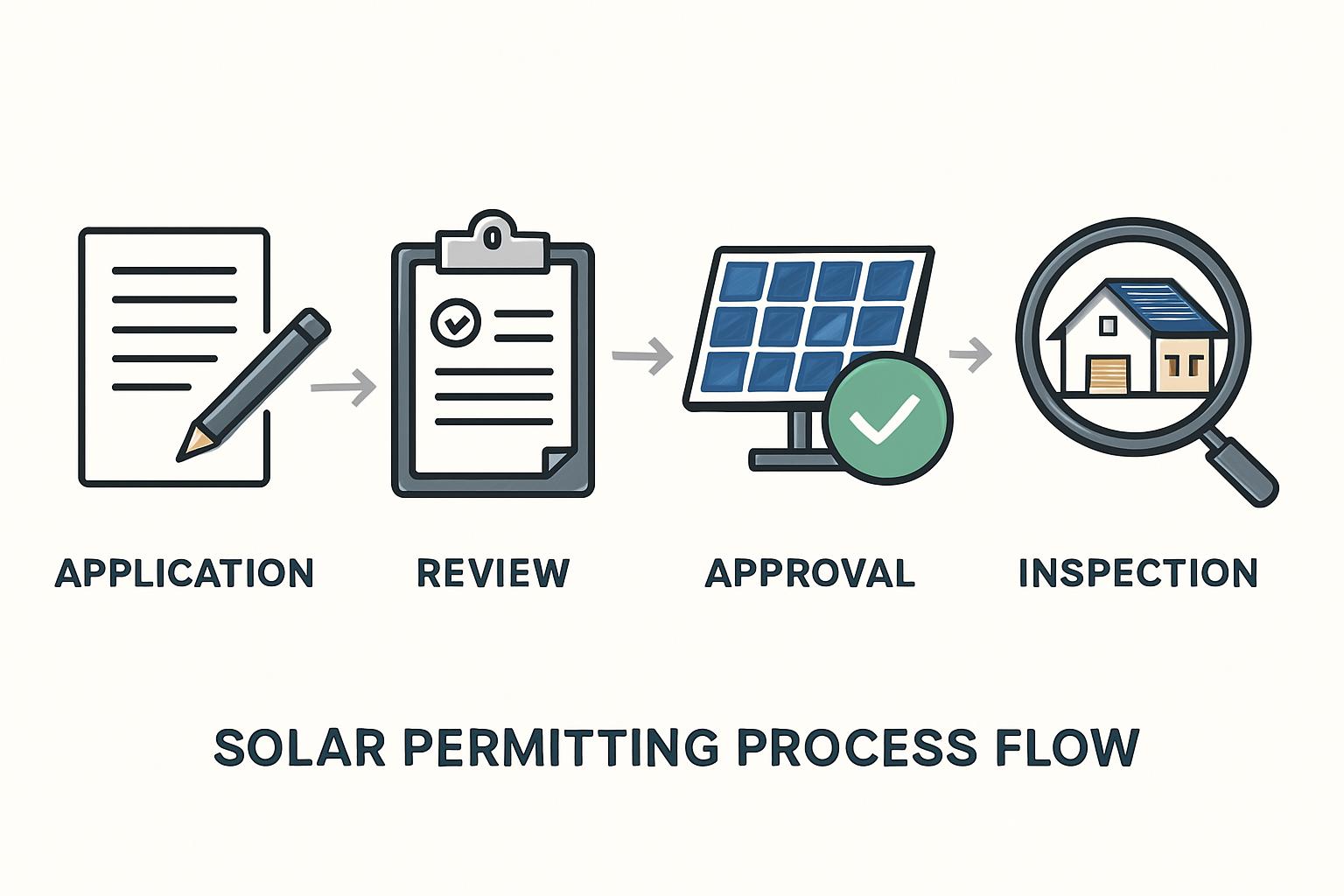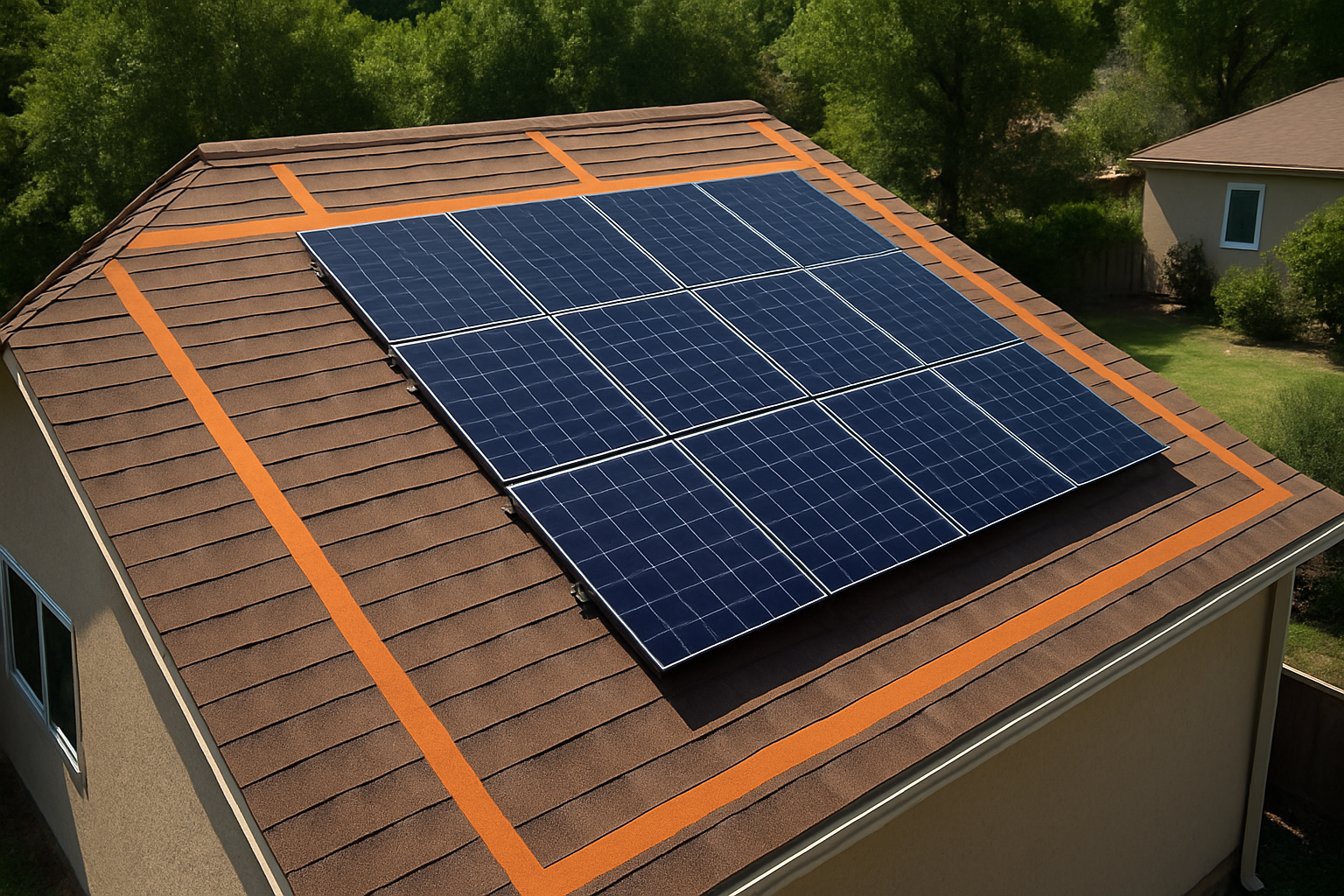Connecting solar energy systems to the electrical grid involves navigating a series of technical standards and local regulations. An efficient interconnection process is crucial for accelerating renewable energy adoption and ensuring your solar investment delivers power quickly. This article provides practical insights into the National Electrical Code (NEC) Article 705, the IEEE 1547 standard, and effective strategies for working with Authorities Having Jurisdiction (AHJs) to streamline your solar interconnection.
Streamlining Solar Grid Connection
The journey to energy independence often culminates in the critical step of grid interconnection. This phase ensures your solar photovoltaic (PV) system can safely and reliably export excess power to the utility grid, or draw power when needed. Delays in this process can impact project timelines and financial returns. Understanding the underlying codes and fostering strong relationships with local authorities can significantly reduce these bottlenecks.
The Importance of Efficient Interconnection
Efficient interconnection is not just about speed; it is about safety, reliability, and compliance. Properly interconnected systems protect utility workers, prevent damage to grid infrastructure, and ensure your solar system operates optimally. When you master the requirements, you gain confidence in your installation and contribute to a more resilient energy future.
Navigating NEC 705: The Foundation for PV Interconnection
The National Electrical Code (NEC) is a cornerstone for electrical installations in the United States. Specifically, NEC Article 705, titled "Interconnected Electric Power Production Sources," provides the foundational requirements for connecting distributed generation sources, including solar PV systems, to an electrical supply system. Adhering to NEC 705 is non-negotiable for safe and compliant solar interconnection.
Understanding Key Requirements of NEC 705
NEC 705 addresses several critical aspects of PV system interconnection:
- Disconnecting Means: It mandates clearly marked, readily accessible disconnecting means for all interconnected power sources. This ensures that utility personnel can safely de-energize your system during maintenance or emergencies.
- Overcurrent Protection: Proper sizing and placement of overcurrent protective devices are essential to safeguard equipment and wiring from excessive current.
- Busbar Ratings: The article provides rules for connecting PV systems to existing service panels, often dictating the maximum allowable current on the busbar to prevent overloading. Understanding load-side versus supply-side connections is vital here.
For example, correctly identifying whether a system requires a supply-side connection (directly to the utility side of the main service disconnect) or a load-side connection (to a circuit breaker within the main service panel) can significantly influence the design and approval process. Misinterpreting these requirements often leads to resubmissions and delays.
Common Challenges and Solutions with NEC 705
One frequent challenge involves correctly calculating busbar ratings and ensuring compliance with the 120% rule for load-side connections. If the sum of the main breaker rating and the PV breaker rating exceeds 120% of the busbar rating, a supply-side connection or a panel upgrade may be necessary. Proactive design review and calculations can prevent these issues. Another common hurdle is the placement and accessibility of disconnecting means. Ensure your designs meet the "readily accessible" criteria for AHJ approval.

IEEE 1547: Ensuring Grid Compatibility and Reliability
Beyond the internal electrical safety governed by NEC, the IEEE 1547 standard dictates the interconnection and interoperability requirements for Distributed Energy Resources (DERs) with the electric power system. This standard is crucial for maintaining grid stability and ensuring that solar systems operate harmoniously with the utility infrastructure.
Evolution and Impact of IEEE 1547 Standards
The IEEE 1547 standard has evolved significantly since its inception. The use of IEEE 1547-2003 in the United States was mandated by the US Federal Energy Policy Act of 2005. They may publish their own grid codes, but these must align with the IEEE 1547 standard. The standard has seen regular updates, with IEEE 1547-2018 being the current version, set to be fully rolled out by 2022.
IEEE 1547 and the upcoming IEEE P.2800 (for transmission-connected Inverter-Based Resources) often contain comprehensive grid code requirements.
Practical Compliance with IEEE 1547-2018
The 2018 revision introduced more sophisticated requirements for DERs, moving beyond simple "connect and disconnect" to active grid support. Key aspects include:
- Ride-Through Capabilities: Systems must remain connected and operational during minor grid disturbances (voltage sags or swells, frequency deviations) rather than immediately disconnecting. This enhances grid resilience.
- Voltage and Frequency Support: DERs are now expected to actively contribute to grid stability by providing voltage and frequency support, often through reactive power control.
- Communication Protocols: Enhanced communication requirements ensure seamless data exchange between the DER and the utility, allowing for better grid management.
Ensuring your chosen inverters and control systems are certified to IEEE 1547-2018 is paramount. Manufacturers often provide compliance documentation. Verifying this documentation early in the design phase can prevent significant delays during the interconnection application review.
Collaborating with AHJs for Expedited Approvals
Authorities Having Jurisdiction (AHJs) are the local entities responsible for enforcing building codes, electrical codes, and other regulations. Their approval is essential for any solar installation. Effective communication and preparation are key to a fast solar interconnection process.
Proactive Engagement Strategies
Do not wait until your application is submitted to engage with your AHJ. Consider these proactive steps:
- Pre-Application Meetings: Schedule meetings to discuss complex projects or unique site conditions. This allows you to clarify requirements and address potential issues before formal submission.
- Understand Local Amendments: While NEC and IEEE 1547 provide national standards, many AHJs have local amendments or specific interpretations. Familiarize yourself with these local nuances.
- Build Relationships: Establish rapport with plan reviewers and inspectors. A positive working relationship can facilitate smoother communication and problem-solving.
For example, some AHJs may have specific preferences for conduit routing or labeling that go beyond the minimum NEC requirements. Knowing these preferences upfront can save time on revisions.
Best Practices for AHJ Submittals
A well-prepared submittal package is your best tool for fast AHJ approval:
- Complete Documentation: Ensure all required forms, permits, electrical diagrams, structural calculations, and equipment specifications are included and accurately filled out. Missing information is a primary cause of delays.
- Clear and Legible Plans: Submit professional, easy-to-read plans. Use standard symbols and clear annotations.
- Highlight Compliance: Explicitly reference the NEC 705 and IEEE 1547 sections your design adheres to. This demonstrates your understanding and reduces reviewer effort.
A study by the National Renewable Energy Laboratory (NREL) found that incomplete applications are a major factor in permit processing delays, sometimes adding weeks to the timeline. Investing time in a thorough initial submission pays dividends.
Accelerating Your Interconnection Process: A Holistic Approach
Beyond understanding the codes and engaging with AHJs, a holistic approach to project management and continuous learning can significantly accelerate solar interconnection.
Leveraging Technology and Documentation
Modern tools and standardized documentation practices can streamline your efforts:
- Digital Permitting Platforms: Many AHJs are adopting online portals for permit applications and tracking. Utilize these systems effectively.
- Standardized Design Templates: Develop pre-approved design templates for common system configurations. This reduces design time and ensures consistency.
- Comprehensive Checklists: Implement internal checklists for design, engineering, and submittal processes to catch errors before they reach the AHJ.
For instance, using software that automatically checks for NEC compliance during the design phase can catch errors that might otherwise lead to rejections.
Training and Continuous Improvement
The solar and energy storage industry is dynamic. Codes and standards evolve. Regular training for your team on the latest revisions of NEC 705 and IEEE 1547 is paramount. Participate in industry workshops and forums. Share lessons learned from previous projects to foster a culture of continuous improvement.
Our company, with extensive experience in the solar industry, focuses on providing reliable and scalable energy solutions. We develop advanced lithium iron phosphate (LiFePO4) batteries, integrated home energy storage systems, off-grid solar solutions, and solar inverters. We understand the critical role of efficient interconnection in achieving energy independence.
Moving Forward with Confident Solar Interconnection
Mastering the intricacies of NEC 705, IEEE 1547, and effective AHJ engagement is not merely about compliance; it is about unlocking faster, more reliable solar energy deployment. By understanding these critical standards, preparing thorough documentation, and fostering proactive relationships with local authorities, you can significantly reduce interconnection timelines. This strategic approach ensures your solar projects contribute efficiently to a sustainable and energy-independent future.
Frequently Asked Questions
What is the primary purpose of NEC 705?
NEC 705 outlines the electrical requirements for safely interconnecting power production sources, such as solar PV systems, to an electrical supply system. It focuses on aspects like disconnecting means, overcurrent protection, and proper wiring to ensure safety and prevent grid disturbances.
How does IEEE 1547 impact solar system design?
IEEE 1547 sets the technical standards for the interconnection and interoperability of Distributed Energy Resources (DERs) with the utility grid. It dictates how solar systems must behave during grid events, requiring features like ride-through capabilities and voltage/frequency support, which directly influence inverter selection and system control design.
What role do AHJs play in solar interconnection?
Authorities Having Jurisdiction (AHJs) are local entities responsible for reviewing and approving solar interconnection applications. They ensure that proposed systems comply with national codes like NEC 705 and IEEE 1547, as well as any local amendments or specific requirements, before granting permission to operate.
Can I bypass these standards for faster approval?
No, bypassing NEC 705 and IEEE 1547 is not possible or advisable. These standards are mandatory for safety, reliability, and legal compliance. Attempting to circumvent them will lead to project rejection, potential safety hazards, and significant delays. Adherence to these standards is key to a fast solar interconnection.
What resources are available for staying updated on these codes?
You can stay updated by regularly consulting the National Fire Protection Association (NFPA) for the latest NEC editions, the IEEE Standards Association for IEEE 1547 updates, and your local AHJ for specific amendments. Industry associations and technical training programs also offer valuable insights and continuing education.





Leave a comment
All comments are moderated before being published.
This site is protected by hCaptcha and the hCaptcha Privacy Policy and Terms of Service apply.